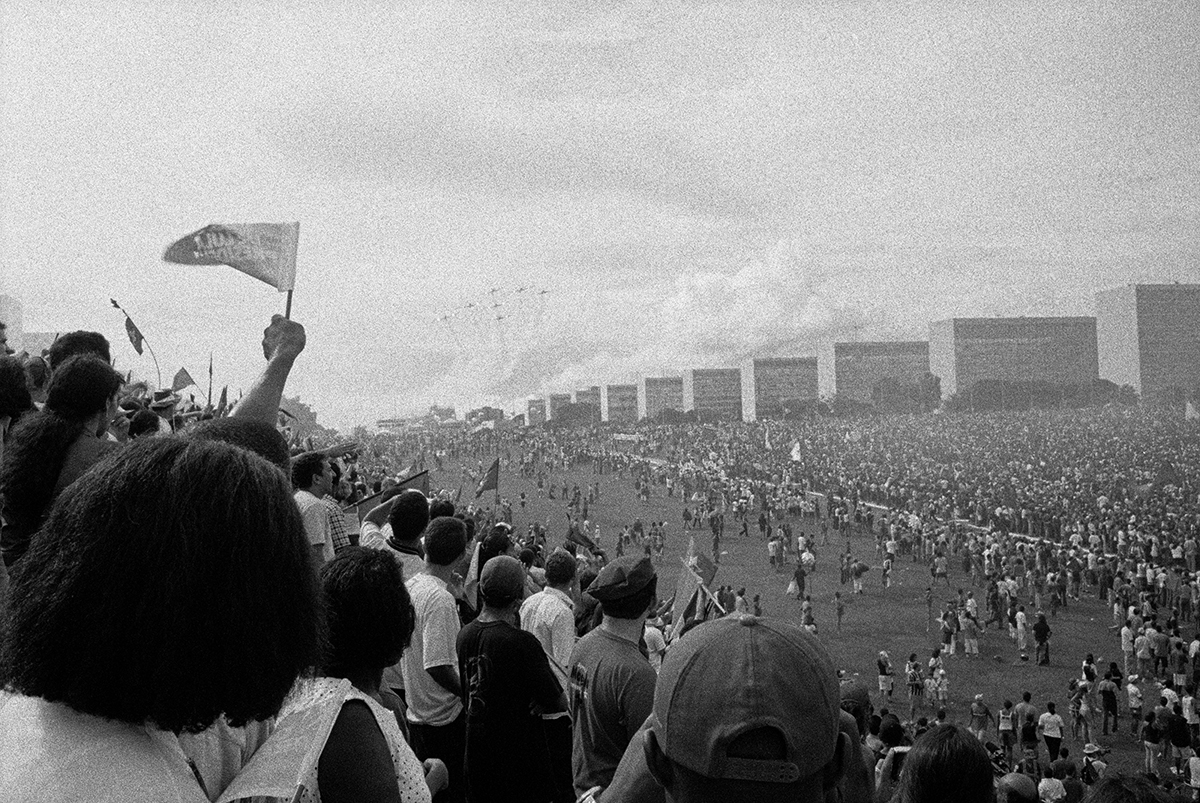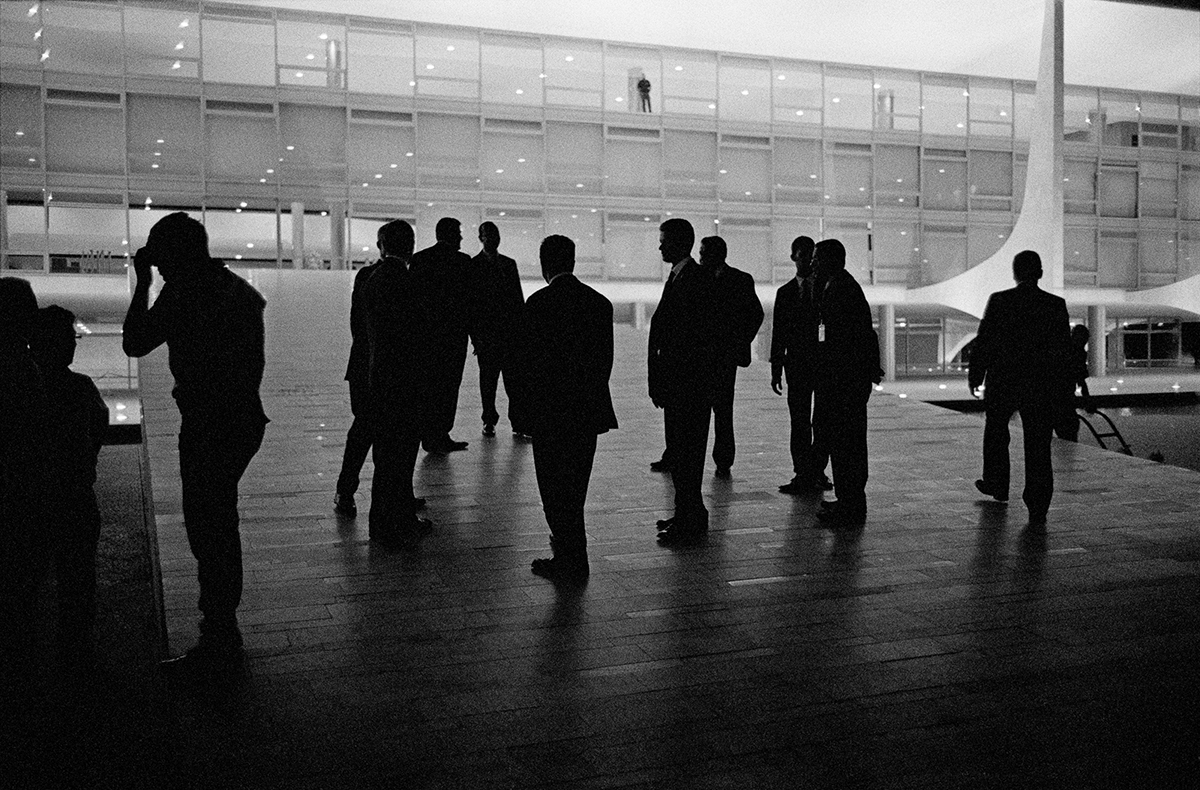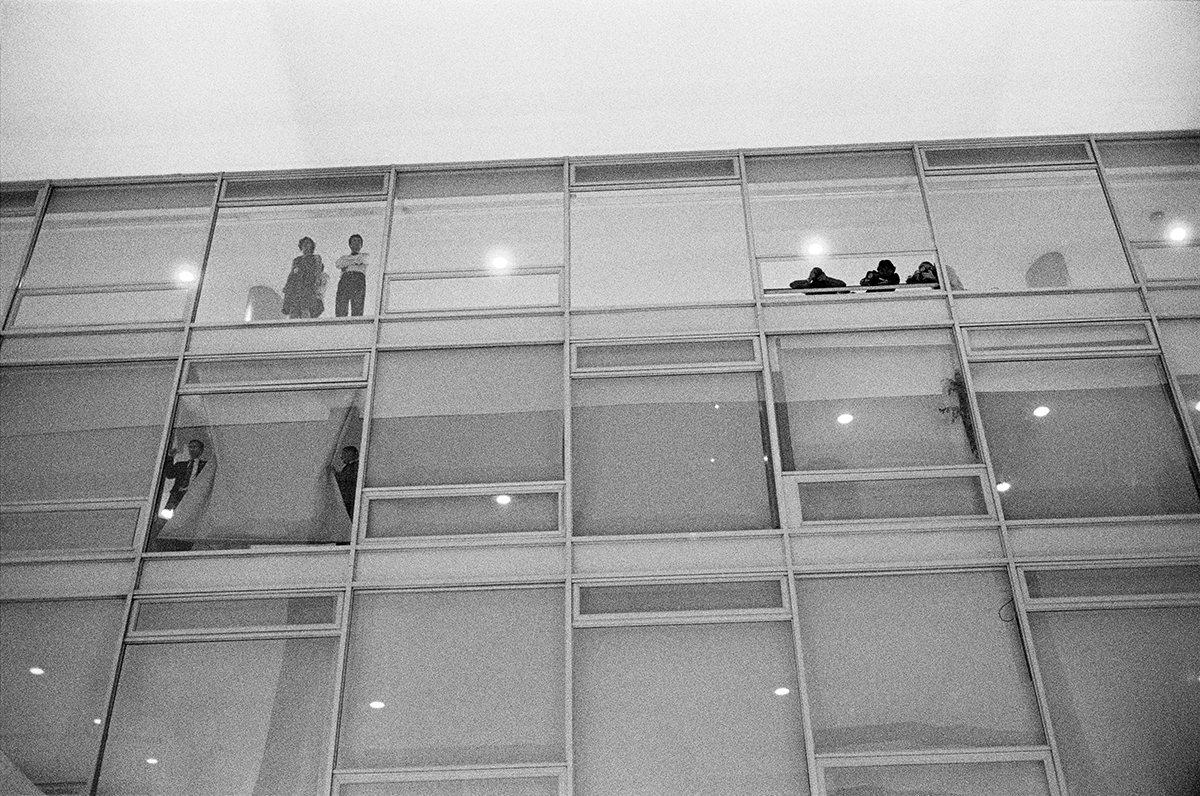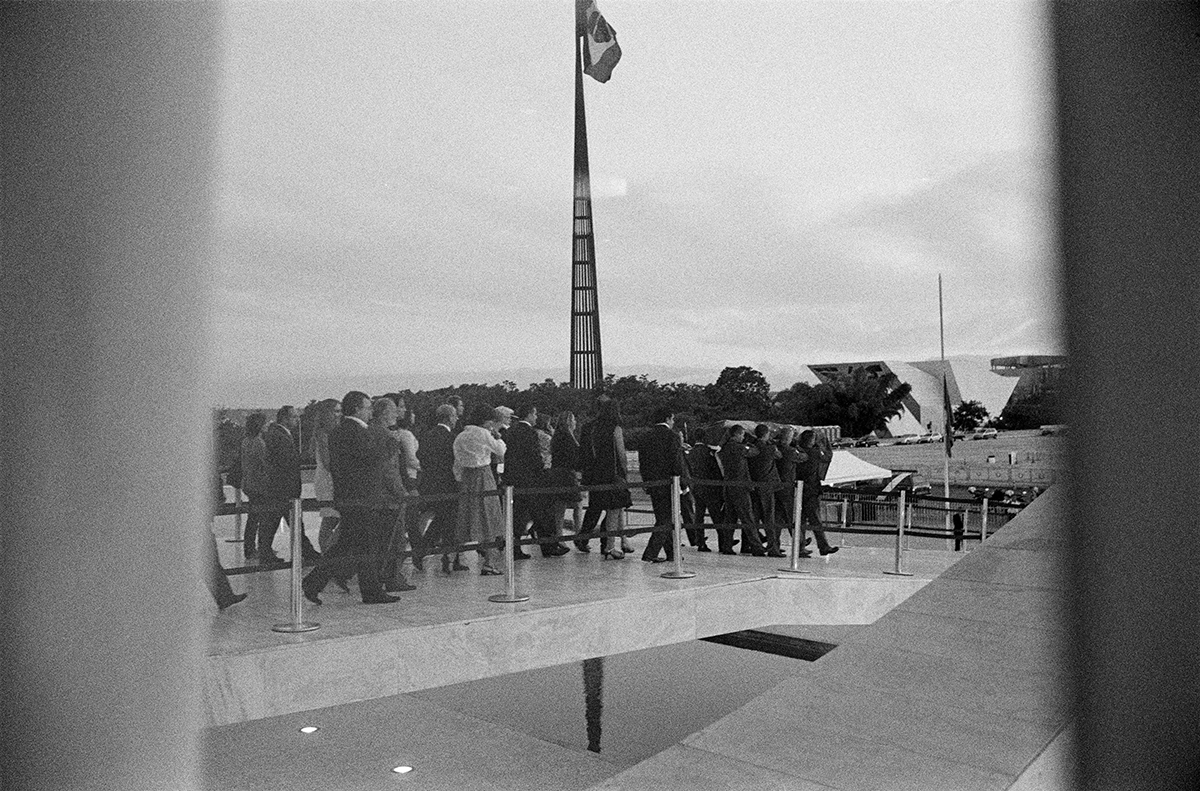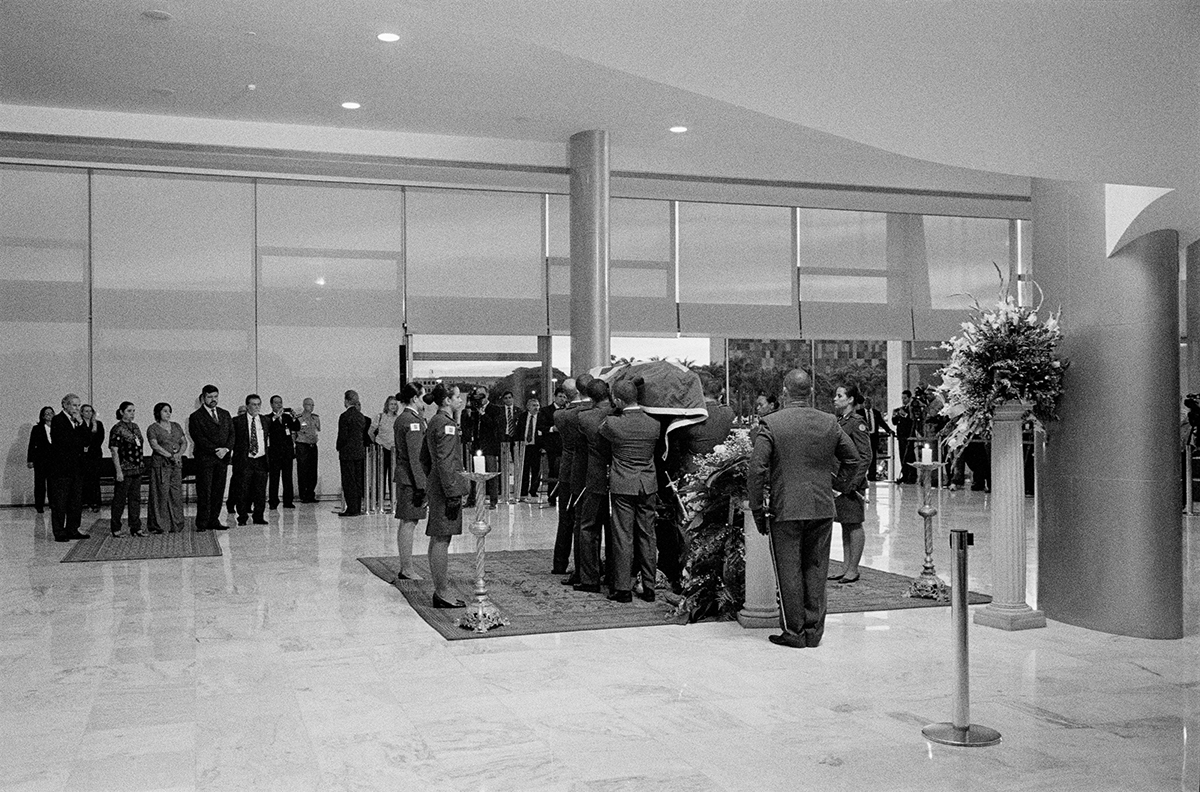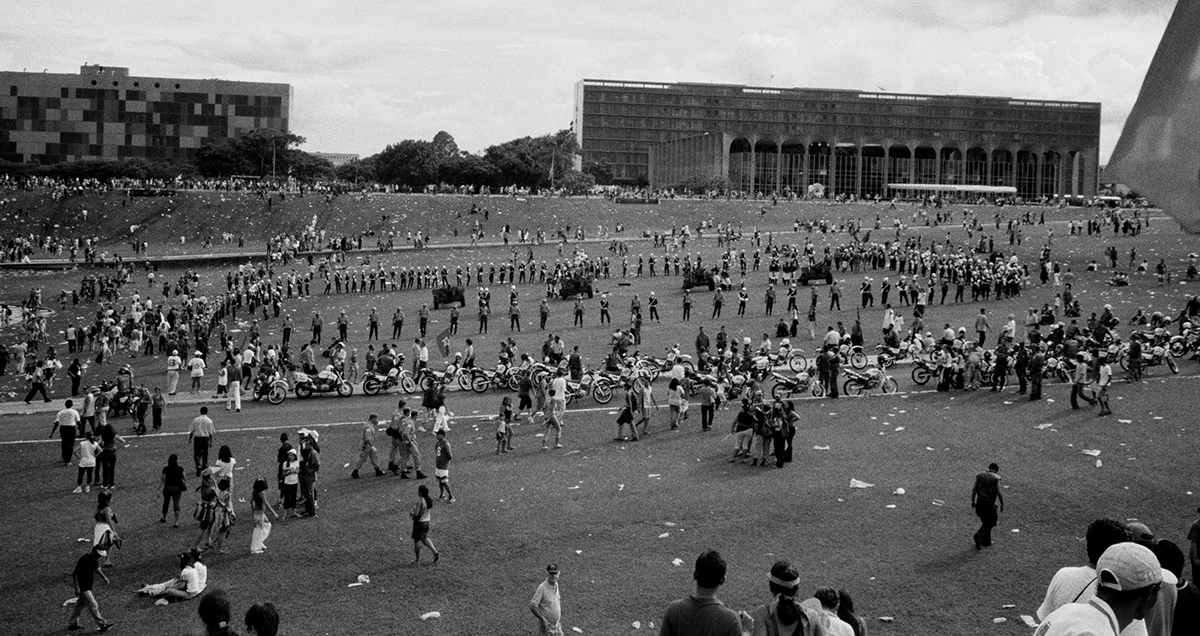Mauro Restiffe - Architecture as Document
Text by Raquel Villar-Pérez
Brasilia is not your typical soulless, purpose-built national capital. The Brazilian city was designated a UNESCO World Heritage site in 1987 because of its distinctly artistic urban design and modernist architecture. Throughout its almost 60 years of history, it has attracted the lens of numerous observers who have attempted to capture the idea of progress imbued in its unparalleled utopian structures – including Mauro Restiffe, whose photographic work elevates these monumental shapes to custodians of historic events.

Brasilia was founded in 1960 as a result of a pledge by Juscelino Kubitschek, president of Brazil from 1956 to 1961, to move the national capital from Rio de Janeiro, a vestige of the Portuguese empire, to a location closer to the country’s centre. (The notion of moving the capital to a more central location had previously been outlined in Brazil’s first republican constitution in 1891.) Oscar Niemeyer, whose name is synonymous with tropical modernism in Brazil, was the chief architect for most of the city’s government edifices, including the Palácio da Alvorada, which serves as the official residence of the president of Brazil, and the Palácio do Planalto, which houses the executive branch of the federal administration. In these buildings, Niemeyer embraced both simplicity and modernity, using fine lines and waves to compose columns and exterior structures.

On a symbolic level, the completion of the long-dreamed-of central capital, the apex of Brazilian modernism, was purported to represent a complete break from the country’s tumultuous past, which had been characterised by poverty and underdevelopment. In spite of the positive attitude, enthusiasm, and the popular belief that a brighter future was on its way, Kubitschek mandate made the country more than triple its foreign debt and economic inequality also increased. In 1964, Brazil underwent a coup d’état, and a military dictatorship subsequently ruled the country for more than 20 years. After a number of democratically elected presidents, whose mismanagement increased inflation, unemployment, and misery across the country, Luiz Inácio Lula da Silva, from the Workers’ Party, was elected as president of Brazil in 2002. Born of humble origins, Lula, as he is popularly known, spent the early years of his political career organising and supporting working-class unions across the country. Upon becoming president, he placed the implementation of social reforms, such as the Zero Hunger and Family Allowance programmes, at the top of his political agenda. Lula represented the empowerment of the working classes and was thought of as a figure who could bring change to the country. This generalised euphoria in the advent of change is what Restiffe immortalised in his 2003 series Empossamento, which documents Lula’s inauguration.
Armed with a 35mm analogue camera, Restiffe did not direct his lens at Niemeyer’s buildings, or at Lula walking up the ramp of the Palácio do Planalto. Instead, Empossamento #1c depicts people beginning to congregate at the Esplanada dos Ministérios. Empossamento #9 shows a crowd directing their gazes away from the camera, although what the multitude is looking at cannot be deciphered by the viewer. By avoiding centring the obvious in his compositions, Restiffe builds a poetic narrative around Lula’s inauguration, in which multiple snapshots create a dynamic documentary continuum that suggests the passage of time while simultaneously – and paradoxically – freezing it, as a result of the intrinsic nature of photography.


This visual stratagem of decontextualising the images also manifests in Restiffe’s 2012 series Oscar, for which the photographer documented Niemeyer’s wake at the Palácio do Planalto. Whereas the Empossamento series was characterised by the portrayal of outdoor spaces emphasising the scale of Niemeyer’s most important project, in Oscar, Restiffe captures the intimacy, solemnity, and reverence of the occasion by focusing on the interiors of the Palácio and close-ups of the exterior, revealing the play of reflections, transparencies, and empty spaces produced by Niemeyer’s extensive use of glass and shimmering polished white concrete surfaces.

Just months before Niemeyer’s death, Lula’s second term as president of Brazil came to an end. A high number of corruption scandals throughout his mandate had overshadowed the general sense of euphoria in the Brazilian population following his election. With Empossamento and Oscar, even though the series were shot only a few years apart, Restiffe, whether consciously or unconsciously, conveyed the rise and fall of an era in the history of Brazil, as embedded in the buildings of its national capital. By documenting these historic events in a non-self-explanatory manner as traditional, grainy, black and white photographs, Restiffe engenders his images with a sense of timelessness, which can unsettle viewers searching for references or clues to try to understand what they’re looking at. Ultimately, the photographer was attracted to capturing Brasilia in ways that could not be depicted again.

